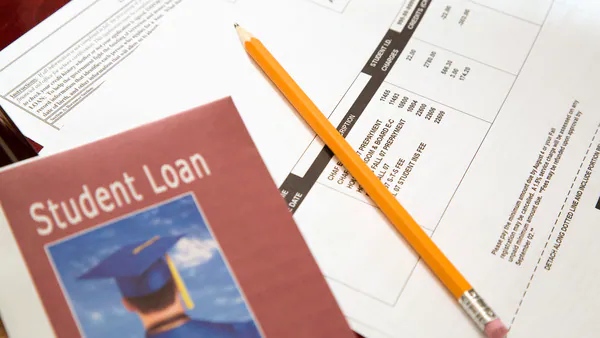When it comes to financing higher education, student loans are often seen as a necessary tool for many students. But with rising tuition costs, increasing interest rates, and a complex repayment system, it’s important to ask, “Can you really afford that student loan?”
For many students, borrowing money for college seems like a straightforward solution, but it’s crucial to understand the long-term impact of student loans. What may seem like a manageable monthly payment during school could quickly snowball into a significant financial burden after graduation. In this article, we will explore the different factors you need to consider when taking out student loans, how to evaluate if you can afford the loan, and what steps you can take to reduce debt and make your loan repayment more manageable.
Key Takeaways
- Understand the full cost of your education, including tuition, books, housing, and personal expenses.
- Evaluate your current and projected financial situation before taking out a loan.
- Carefully consider the repayment terms and ensure your loan payments will be manageable based on your future income.
- Explore federal student loan options over private loans, as they generally offer better repayment terms and protections.
- Borrow only what you can afford to repay, and seek financial advice if needed to avoid overburdening yourself with debt.
Understanding the Basics of Student Loans
Before diving into the affordability of student loans, let’s take a step back and look at how student loans work. Student loans are essentially borrowed money that must be repaid over time, with interest. There are two primary types of federal student loans:
- Subsidized loans – These loans are awarded based on financial need, and the U.S. Department of Education pays the interest while you’re in school at least half-time, during your grace period, and during deferment.
- Unsubsidized loans – These loans are not based on financial need, and interest accrues as soon as the loan is disbursed, meaning you are responsible for paying the interest even while in school.
In addition to federal student loans, there are also private student loans, which are offered by banks, credit unions, and other financial institutions. These loans tend to have higher interest rates, fewer repayment options, and stricter credit requirements than federal loans.
It’s essential to be fully aware of the type of loan you’re taking out, the interest rates, the repayment terms, and the total cost of borrowing before committing to any student loan.
Calculating the Total Cost of Your Education

One of the first steps in determining if you can afford your student loan is understanding the true cost of your education. It’s not just about tuition; there are additional costs such as:
- Books and Supplies – Depending on your course load, textbooks, software, and other course materials can add up quickly.
- Room and Board – If you’re living on campus or off-campus, this cost can make up a significant portion of your budget.
- Transportation – Whether it’s a bus pass, car expenses, or travel home during breaks, transportation costs can be significant.
- Personal Expenses – Your day-to-day living expenses, including food, entertainment, and clothing, should also be factored into your cost of education.
The average student loan borrower graduates with over $30,000 in debt. However, the actual amount can vary based on the school, the degree program, and whether the student is living on or off campus. It’s critical to have a clear understanding of all these expenses, as they directly affect the amount you’ll need to borrow.
Assessing Your Financial Situation
| Category | Details | Estimated Amount (USD) |
|---|---|---|
| Savings | 529 plan, personal savings, etc. | $ |
| Family Contribution | Annual or total support from family | $ |
| Income During School | Part-time job, internships, freelance | $ / month |
| Scholarships & Grants | Awards that do not need to be repaid | $ |
| Other Financial Aid (excluding loans) | Work-study programs, assistantships | $ |
| Estimated Annual Educational Costs | Tuition, books, fees, housing, etc. | $ |
| Estimated Gap (Amount Needed) | Total costs – Total resources | $ |
Once you have a clear picture of the cost of your education, it’s time to assess your financial situation. Consider the following factors:
- Your Current Income – If you are working while attending school, what is your current income? Will it be enough to cover some of your costs or reduce the amount you need to borrow?
- Your Family’s Financial Contribution – If your family is helping you finance your education, how much can they contribute? Will you need to take out additional loans to cover the gap?
- Scholarships and Grants – Have you applied for scholarships and grants? These are funds you do not need to pay back and can significantly reduce the amount you need to borrow.
- Part-Time or Full-Time Work After Graduation – What is your earning potential once you graduate? A high-paying career can make loan repayment easier, while lower-paying fields might make it more difficult.
By understanding your financial situation, you’ll be able to make a more informed decision on how much you can afford to borrow and how much debt you’ll be able to manage after graduation.
Understanding Loan Repayment

Repaying student loans is a long-term commitment, so it’s important to understand how loan repayment works. Most federal student loans offer a grace period, typically six months, after graduation before you must begin repaying the loan. During this time, you will not have to make payments, but interest may continue to accrue.
Loan repayment terms vary depending on the type of loan, but common federal repayment options include:
- Standard Repayment Plan – Fixed monthly payments over 10 years.
- Income-Driven Repayment Plans – Monthly payments based on your income and family size.
- Graduated Repayment Plan – Payments start low and gradually increase over time.
For private student loans, the repayment options are usually less flexible, and interest rates are often higher. You may also face a shorter repayment period and higher monthly payments.
One crucial question to ask is whether your future income will allow you to make these monthly payments. For instance, if you plan on pursuing a career in social work or teaching, which tend to have lower salaries, a significant student loan might be difficult to manage.
Can You Really Afford the Loan?
Now that you understand the total cost of education, your financial situation, and loan repayment options, it’s time to ask the critical question: Can you really afford that student loan?
To answer this, you’ll need to evaluate whether you can comfortably make the monthly payments based on your projected income after graduation. A general rule of thumb is that your monthly loan payments should not exceed 10-15% of your monthly take-home pay. If the loan payments are too high, it may lead to financial strain and limit your ability to save, invest, or cover your living expenses.
Here’s how to assess affordability:
- Estimate your future salary – Research salaries in your field and determine a realistic starting salary.
- Calculate your monthly loan payment – Use an online student loan calculator to estimate your monthly loan payment based on the amount you borrow, the interest rate, and the loan term.
- Consider other expenses – Don’t forget about living expenses, taxes, insurance, and other essential costs when evaluating your budget.
- Plan for emergencies – Unexpected costs, such as medical bills or car repairs, can arise. Make sure your loan repayment plan leaves room for financial flexibility.
If your student loan payments will take up a significant portion of your future income, you may need to reconsider how much you borrow or explore other funding options.
Also Read: What’s the Real Cost of Student Loans?
Conclusion
Student loans can provide the necessary funds for higher education, but they come with a significant responsibility. Before borrowing, it’s essential to fully understand the total cost of your education, your financial situation, and your ability to repay the loan after graduation. If your loan payments are manageable in relation to your future income, then borrowing may be a smart decision. However, if the loan payments seem too burdensome, it might be worth reconsidering how much you borrow or exploring alternative funding options.
FAQs
- How much student loan debt is considered too much?
A good rule of thumb is to borrow no more than what you expect to earn in your first year of employment after graduation. If you borrow significantly more, it might be harder to manage loan repayment. - Can student loan payments be lowered?
Yes, federal loans offer income-driven repayment plans, which adjust your payments based on your income and family size. Private loans may offer forbearance or deferment, though options are limited. - What happens if I can’t make my student loan payments?
Missing student loan payments can result in late fees, higher interest rates, and damage to your credit score. Federal loans offer deferment or forbearance in some cases, but private loans may have more limited options. - Can student loans be forgiven?
There are several student loan forgiveness programs, particularly for those who work in public service, teaching, or healthcare. Federal loans are eligible for these programs, but private loans are not. - Is it better to borrow federal or private loans?
Federal loans are generally better because they offer lower interest rates, more repayment options, and borrower protections. Private loans may have higher rates and fewer options. - How can I reduce my student loan debt?
You can reduce your student loan debt by borrowing less, taking advantage of scholarships and grants, and exploring income-driven repayment plans or refinancing options. - When do I start repaying my student loans?
Federal loans typically begin repayment six months after graduation, while private loans may require payment sooner. It’s important to understand your loan’s terms to avoid missed payments.




